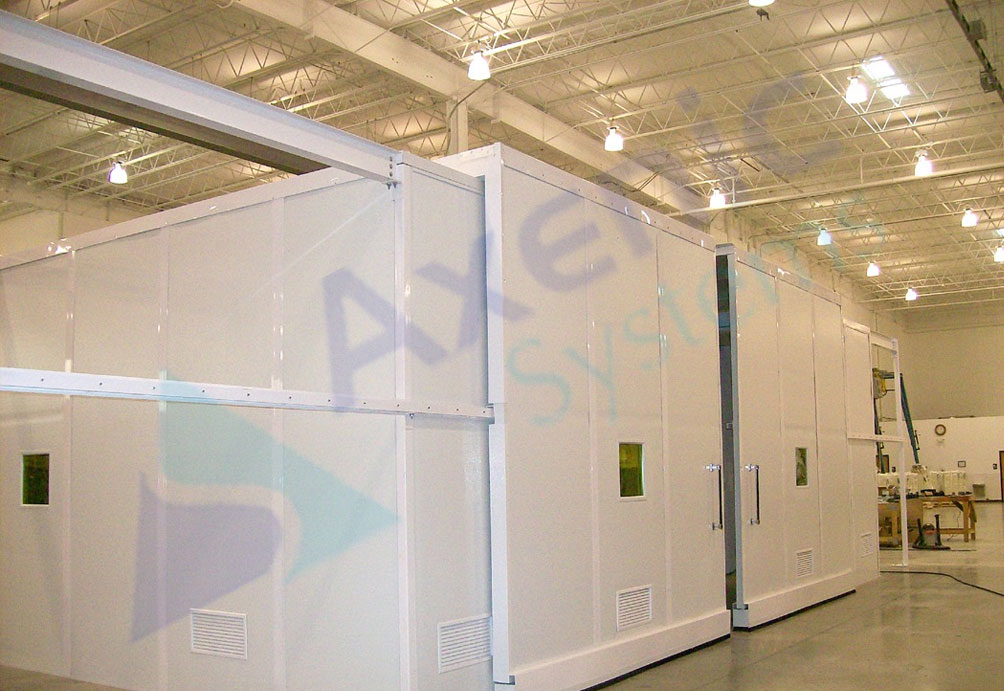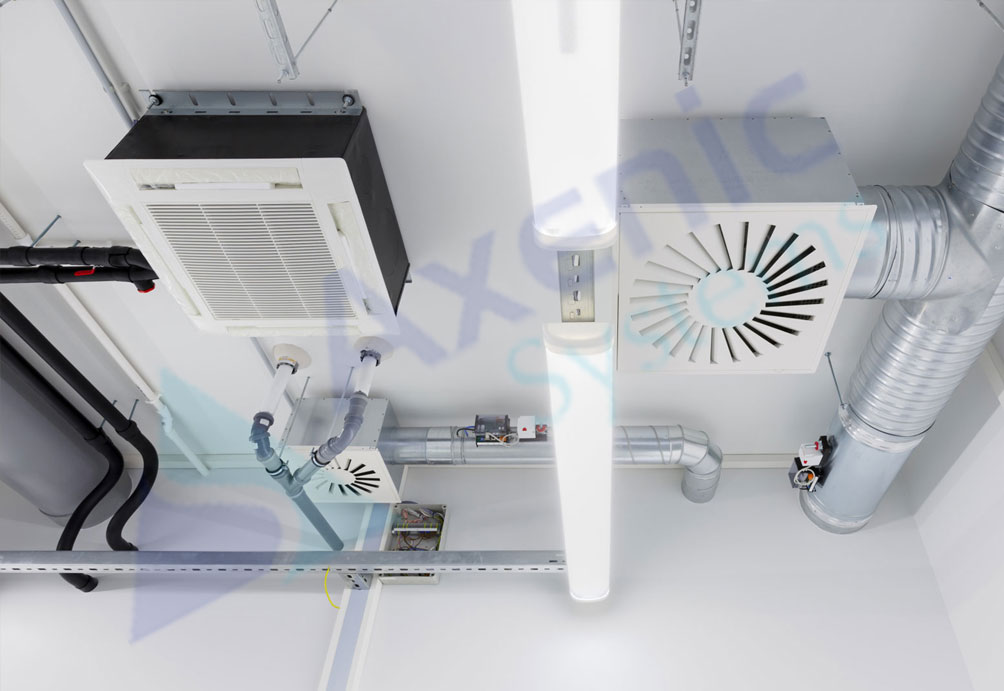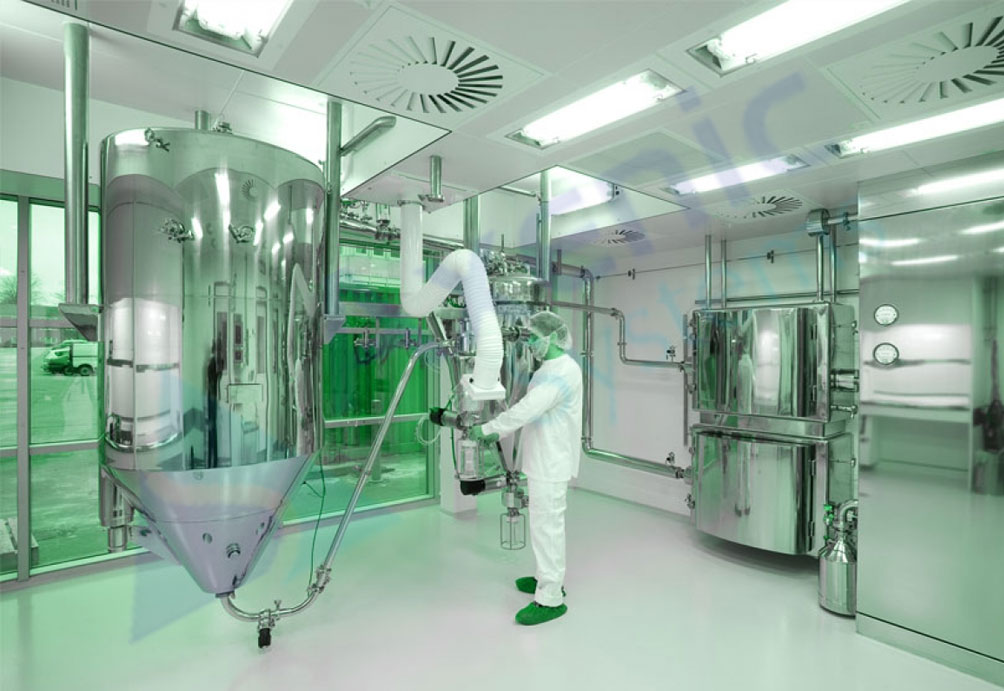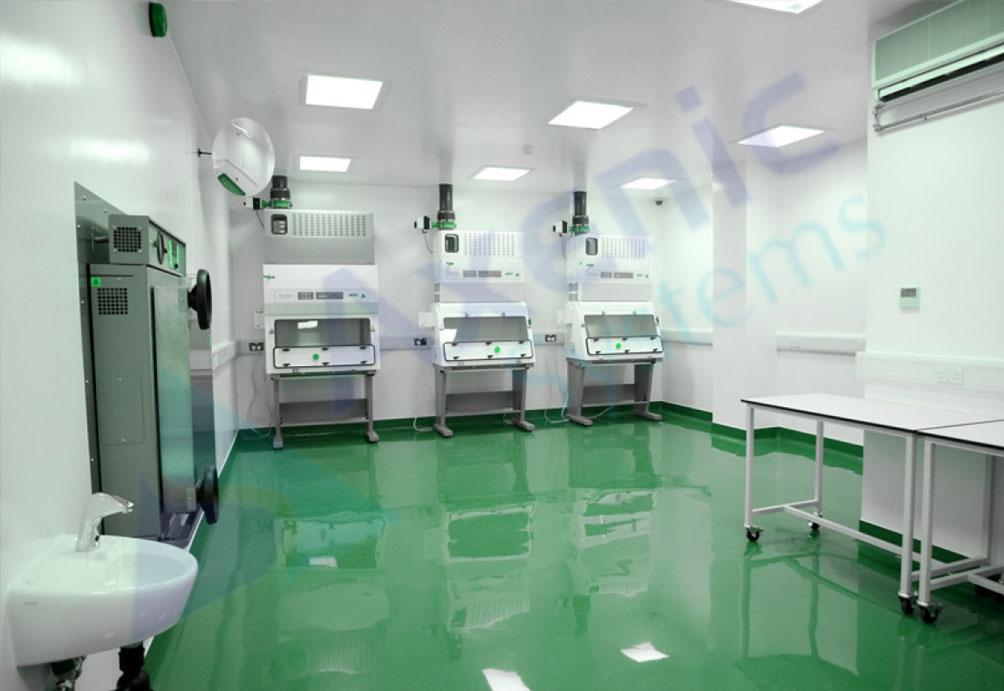Axenic System is one of the leading company engaged in architectural
designing, planning, installation, commissioning of HVAC and Turnkey
construction for cleanroom projects
Cleanrooms
Table of Contents
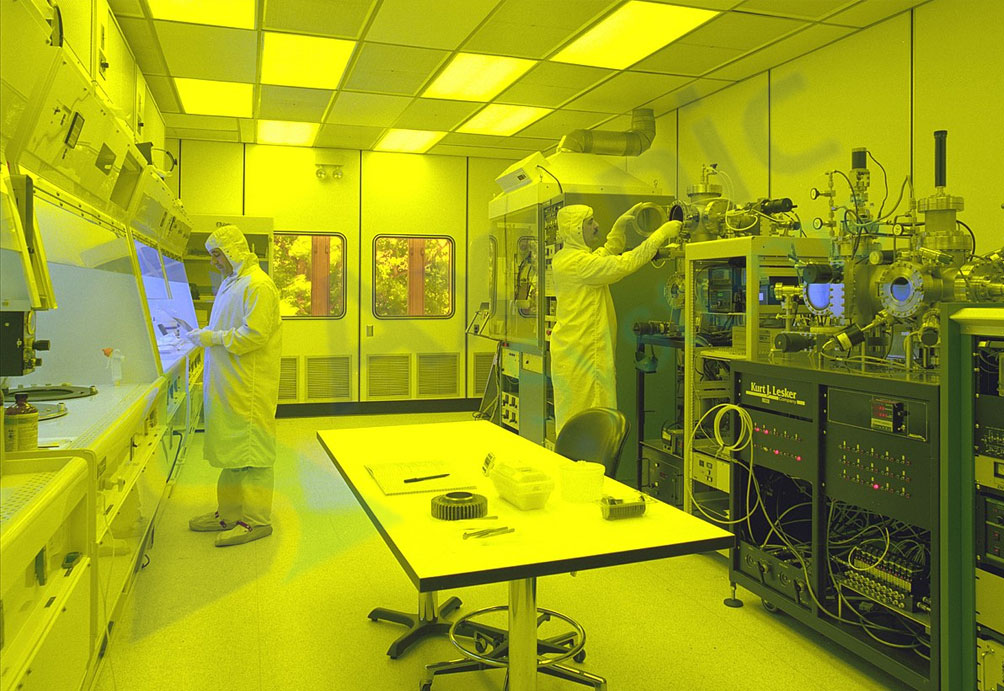
What is a cleanroom?
A cleanroom is a controlled environment where contaminants like airborne microbes, dust, and aerosol particles are filtered out in order to provide the cleanest area possible. Most cleanrooms are used for manufacturing products like pharmaceutical products, electronics, and medical equipment. A cleanroom can be categorized into different stages of contamination depending on the amount of particles allowable in the space, per cubic meter. Cleanrooms also control variables like air flow, temperature and humidity. The ambient air outside in a typical city atmosphere includes 35,000,000 particles per cubic meter, 0.5 micron and larger in diameter, corresponding to an ISO 9 cleanroom which is at the lowermost level of cleanroom standards.
Cleanroom Overview
Cleanrooms are used in almost every industry where small particles can harmfully affect the manufacturing procedure. They vary in size and complexity, and are widely used in industries like pharmaceuticals, semiconductor manufacturing, biotech, medical device and life sciences, as well as critical process manufacturing common in optics, aerospace, military and Department of Energy.
A cleanroom is any given confined space where provisions are made to decrease particulate contamination and control other environmental parameters such as humidity, temperature and pressure. The basic component is the High Efficiency Particulate Air (HEPA) filter that is used to trap particles that are 0.3 micron and larger in size. All of the air delivered to a cleanroom passes through HEPA filters, and in some cases where strict cleanliness performance is essential, Ultra Low Particulate Air (ULPA) filters are used.
Employees selected to work in cleanrooms undergo extensive training in contamination control concepts. They enter and exit the cleanroom through air showers, airlocks and/or gowning rooms, and they must wear special clothing intended to trap contaminants that are certainly generated by skin and the body.
Depending on the room arrangement or function, employees’ grooming may be as limited as lab coats and hairnets, or as broad as fully enveloped in various layered bunny suits with self-contained breathing apparatus.
Cleanroom apparel is used to prevent substances from being released off the wearer’s body and polluting the environment. The cleanroom clothing itself must not discharge particles or fibres to prevent contamination of the environment by workers. This kind of personnel contamination can reduce product performance in the semiconductor and pharmaceutical industries and it can cause cross-infection between patients and medical staff in the healthcare industry.
Cleanroom AirFlow Principles
Cleanrooms maintain particulate-free air through the use of either ULPA or HEPA filters using laminar or turbulent air flow principles. Laminar, or unidirectional, air flow systems direct cleaned air downward in a continuous stream. Laminar air flow systems are usually employed across 100% of the ceiling to maintain continuous, unidirectional flow. Laminar flow standards are generally stated in portable workstations (LF hoods), and are authorized in ISO-1 through ISO-4 classified cleanrooms.
Proper cleanroom design includes the entire air distribution system, including provisions for adequate, downstream air returns. In vertical flow rooms, this means the usage of low wall air returns around the boundary of the zone. In horizontal flow applications, it needs the use of air returns at the downstream perimeter of the procedure. The use of ceiling mounted air returns is inconsistent to proper cleanroom system design.
HOW DO YOU KEEP A CLEANROOM CLEAN?
It can be challenging to maintain the standards of a cleanroom. The rooms themselves can be sensitive, and everything you bring into the room is expected to release particles into the air, even your personnel. So, what are the best techniques to keep your cleanroom up to the standards you so thoroughly maintained? Here’s a few simple concepts, and some useful suggestions for maintaining the highest level of cleanliness.
Gowning: It is necessary for anyone who enters the cleanroom to wear protective clothing. Human beings are full of particles: our skin flakes, our hair falls out, and there’s no way to control it. Therefore, it is important that anyone going into the cleanroom wear the recommended protective clothing. Depending on the cleanroom’s class, this might just be a glove and gown, or it could be a full head to toe “bunny suit” complete with a mask and safety glasses.
Cleanroom Furniture: Believe it or not, furniture gives off particles even when it is just sitting there. Although special furniture is manufactured to reduce the particles and dust that fall and gather on furniture. It is a decent idea to spend on this kind of furniture if you’re interested in keeping your cleanroom clean.
Air Shower: If you’re worried with controlling the amount of particles brought into the cleanroom, you might consider investing in an air shower. Used in combination with the gowning room, it blows off any particles that could simply fall off people entering the cleanroom. A great way to remove any extra particles before your personnel enter the room.
Sticky Flooring: This is the paramount way to take care of wheel-borne or foot-borne contaminants. Better than sticky mats, sticky flooring is more tough, effective, and can last for 3-5 years, if properly cleaned and taken care of. If your cleanroom has a high standard for hygiene, this is a useful addition to your cleanroom.
WHO NEEDS A CLEANROOM?
The semiconductor, electronic, high-tech, pharmaceutical, aerospace, medical and many other manufacturing industries depend on cleanroom technology. As products such as cell phone circuit boards become smaller, the chance of contamination in manufacturing becomes complex. For pharmaceutical companies safe, clean and contaminant-free products are vital to manufacturing and distributing a feasible product.
